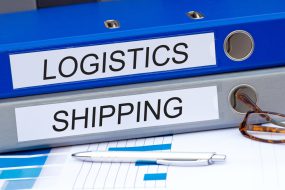Exporting goods internationally might sound complicated, but it doesn’t have to be. Enter freight forwarders – your behind-the-scenes superheroes who keep your supply chain flowing smoothly, no matter where your business is based. With the global economy becoming more connected than ever, understanding how these logistics experts work is key to staying ahead of the competition.
Related reading: Supercharge your SME supply chain with these tech innovations
What exactly is freight forwarding?
In simple terms,freight forwardingis managing and coordinating the movement of goods across borders. It’s a mix of transportation,warehousing, and customs services that ensure everything arrives where it’s supposed to—on time and in one piece.Freight forwarderswork like intermediaries, linking with various transport services—from ships to planes—to ensure goods are where they need to be when required.
The cool tech shaping freight forwarding
The freight forwarding world is changing fast, thanks to cutting-edge technology. From blockchain to AI, forwarders embrace these innovations to make logistics more secure, efficient, and transparent. Here’s how:
Blockchain: Transparency you can trust
Blockchain might sound like something for tech geeks, but it’s a game-changer in logistics. It provides a digital ledger of all transactions, making it easy to verify the authenticity of goods and ensure they meet regulatory standards. This transparency reduces fraud and builds trust across the board.
AI & predictive analytics: Smarter, faster, better
Artificial Intelligence (AI) is making supply chains smarter. With AI-driven analytics, freight forwarders can predict demand, find the best routes, and stay on top of inventory. This leads to more accurate delivery times and fewer disruptions, meaning your goods get to their destination without a hitch.
Related reading: The next big thing in logistics: Drones, AI, and faster deliveries
Multimodal transportation: The secret sauce to flexibility
In the world of global shipping, multimodal transportation is key. This means using a mix of transport methods – land, sea, and air – to get your goods from Point A to Point B. It’s cheaper, more flexible, and often greener. By combining different transport options, freight forwarders can optimise costs and delivery times and reduce your carbon footprint. How’s that for a win-win?
The perfect blend: Land, sea, and air
Freight forwarders learn how to get the best of all worlds – whether a truck, ship, or plane. With the right mix, they can cut costs and speed up delivery. Plus, they can help you go green, which is essential as sustainability becomes a significant concern for businesses.
A real-world example
Let’s say you need to export perishable goods from India to Europe. A freight forwarder might take the goods by refrigerated truck to the port, ship them across the ocean, and then transport them by rail or road to the final destination. It’s a clever, cost-effective solution that keeps everything fresh.
Related reading: The secret to business growth: Choosing the right logistics partner
Challenges freight forwarders face (And how they tackle them)
The freight forwarding world isn’t all sunshine and rainbows. Challenges – like regulations, political tensions, and environmental impact – require forwarders to stay on their toes and be flexible. Here’s how they keep things moving:
Regulatory headaches? No problem
International trade laws can be a maze, with rules constantly changing. Freight forwarders are experts in navigating customs, tariffs, and paperwork so your goods stay on track without getting stuck in red tape.
Geopolitical tensions? They’ve got it covered
In a world where politics can wrench in trade, forwarders create backup plans to keep goods moving. They know how to diversify routes and manage risks to ensure you’re never left hanging.
Going green in logistics
With rising environmental concerns, freight forwarders are adopting greener practices to reduce emissions, cut fuel consumption, and opt for sustainable packaging. This helps the planet and meets the growing consumer demand for eco-friendly business practices.
Related reading: Sustainable logistics: The smart (and profitable) way to cut your carbon footprint
What does this mean for your business?
If you’re managing a supply chain, running an e-commerce business, or just looking to get your goods from point A to point B without a headache, it’s time to team up with a freight forwarder. They’ve got the expertise to save you money, time, and stress. By working with these logistics pros, you can tap into cost-effective shipping routes, stay on top of regulations, and use the latest tech to keep your operations running smoothly.
Key takeaway
Freight forwarders are the unsung heroes of global trade, helping businesses stay competitive and efficient in an ever-changing world. Their expertise and tech-driven solutions make getting goods moving across borders easier than ever. Whether you’re just starting or a seasoned pro, partnering with a freight forwarder can give your business the edge it needs in today’s fast-paced, interconnected world. Ready to dive in?Get in touchtoday.


